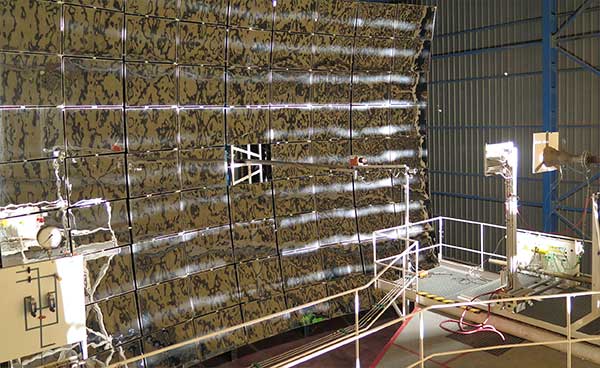There are two key performance indicators of the solar receiver:
- Its conversion efficiency (= the fraction of incident solar power that is transformed into heat and transferred to the heat transfer fluid), and
- Compatibility with inexpensive TES (Thermal energy storage), as solar heat must be stored during the day. Out of several viable options, the ASTERIx-CAESar project selected the OVAR (Open volumetric air receiver) technology, due to
- The least costly TES integration
- Easy and simple long-term operability
- Lowest environmental impact
- Recycling potential.
The project will capitalise on the expertise gained from the 5-year research project CAPTure, where a novel OVAR concept was tested at TRL 5.
Read here about the Thermal Shields in solar towers and how they contribute to the solar receivers’ efficiency and longevity.
The novel approach of the ASTERIx-CAESar receiver lies in considerable simplification compared to previous research projects. The innovative design applies the concept of stackable, “free-floating” ceramic absorber modules arranged in vertical columns. Each column can expand upwards according to its specific temperature distribution

Find more information on ceramic absorber modules here.
This design has not only advantages with respect to simplicity of design, but also regarding reduced thermal stress loading of individual absorber modules, thus reducing the risk of failure.
In the interest of the easy receiver replication at different nominal power classes, the proposed up-scaled receiver design is modular as well. The complete receiver is composed of an even number of sub-modules until the corresponding nominal power is achieved.
The ASTERIx-CAESar project will completely validate this receiver technology at TRL 6-7 at a thermal power of 480 kWth, reutilising and modifying the existing CAPTure prototype, by replacing the existing cup modules by newly developed ones.
As the next step, the receiver’s radiation shield and internal thermal insulation will be optimised for future commercial size up-scaling and replication.


